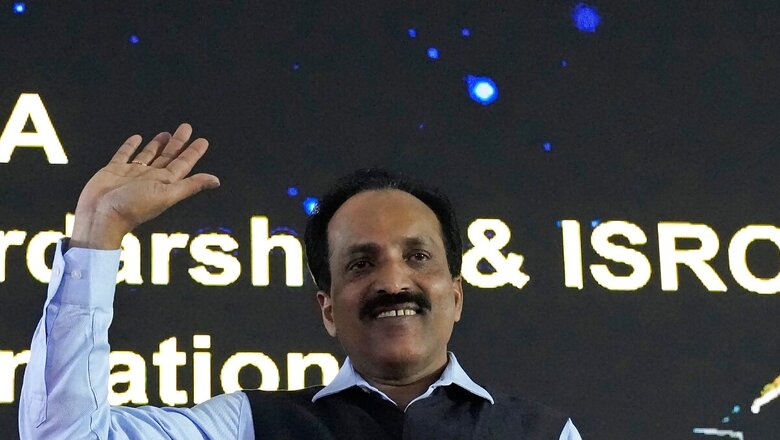
views
When the Indian Space Research Organization (ISRO) returned to launch-pad with Chandrayaan-3 in July this year, the excitement was palpable among people. Four years had passed since India last attempted to touch the moon. There was a renewed sense of hope, but this time, it was buoyed by the confidence exuded by a self-assured scientist at the helm.
“No matter what, Chandrayaan-3 will definitely land on the moon,” ISRO Chairman S Somanath declared with foremost conviction days before the launch. “We have tried to fix every unexpected problem, every process which in our mind could go wrong, including any algorithm issue that might occur. Everything is set now.”
As Lander Vikram began its 15-minute powered descent, it glided through the tenuous atmosphere of the moon precisely as planned – first horizontally, and then vertically until it made its pitch-perfect landing near the lunar south pole.
“India is on the moon,” the ISRO chief announced triumphantly from the dais at the Control Room just before the sun set on August 23, marking a new dawn for India as only the fourth nation in the world to achieve the historic feat.
2023 is etched in history as the year India became the first country to land near the lunar south pole – the big destination that every space faring nation wants to explore.
In just two years of becoming the ISRO chief, Somanath has deftly propelled the national agency closer to the moon and the sun, and realised the dreams of a multitude of scientists who dedicated years to the goal. Within days of Chandrayaan-3’s touchdown, ISRO launched another pivotal mission – Aditya L1 – India’s first-ever solar observatory on September 2. It is currently navigating its path in space and is expected to park itself at the Lagrange Point-1(L-1) point about 1.5 million km from the Earth in early January.
The year also saw ISRO gearing up to realise India’s first ever human spaceflight – Gaganyaan – that aims to send three astronauts to an orbit of 400km for the first-time ever and bring them safely back to Earth after three days. The mission is set for a late 2025 launch, but will be preceded by a series of challenging demonstrations test vehicle flights and unmanned flights with robots on-board.
“It is nothing like sending a satellite into space. We cannot take chances with human beings. So we are going cautiously and carefully. It usually takes a long time, over 10 years, to develop human spaceflights capability. We did it in four years,” the ISRO chief had told News18 earlier.
On October 21, ISRO put the crew module to its first flight test in Sriharikota by lifting off an experimental rocket to an altitude of about 17km and then aborting the mission mid-way. After an initial hiccup during launch, the team fixed the glitch within an hour and fired the rocket to successfully test the crew module which was then recovered from the adjoining Bay of Bengal where it splashed down as planned.
With Somanath at the helm, ISRO has indeed lifted many achievements this year, but as 2023 draws to a close, the space agency has its eyes firmly locked on bigger targets. The second test-vehicle flight (TV-D2), unmanned test flights for Gaganyaan are scheduled in early 2024 along with several other crucial tests in the run-up to the final mission. Aditya L-1 is also expected to reach the crucial phase of its journey. If all goes as planned, it will start relaying data during the next few weeks.
The space agency is also entrusted with the task of launching a mega satellite – NASA-ISRO Synthetic Aperture Radar (NISAR) – as part of an Indo-US joint mission early next year. Integrated at NASA’s Jet Propulsion Laboratory in California, the satellite was brought to India in March. It will map the entire globe every 12 days and capture places that have otherwise been obscured. Amidst all this, ISRO is also looking to expand its fleet of rockets with the Small Satellite Launch Vehicle (SSLV) to cater to the launch of private satellites. A second spaceport is also being developed near Tamil Nadu for the SSLV launches.
All in all, it has been a memorable year for the space agency. But bigger milestones await.




















Comments
0 comment